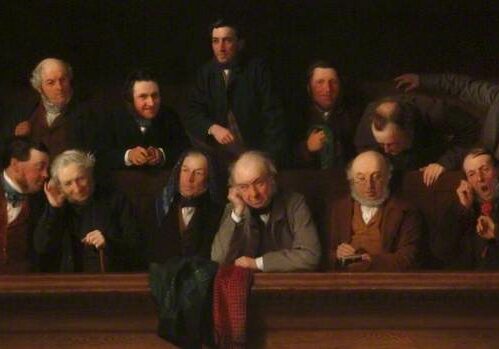Will the First Step Act Lead to the Second Step in Prison Reform?
A Necessary Reform

The First Step Act, an initiative aimed at federal prison reform, was recently enacted into law. It passed both the House and Senate with overwhelming support. President Trump immediately signed the legislation. Thus, the Act affirms the popular consensus of the American public that some form of federal prison reform is needed.
By definition, reform is the correction, amendment, or removal of an abuse, defect, corruption or some other wrong that exists. Congressional support of the First Step Act suggests that lawmakers believe there is something wrong with the federal prison system.
Hint: There is.
One aspect of the problem is the size of the federal prison population. As of 2016, Federal prisons house about 200,000 individuals. This is 12.6 percent of the nation’s total prison population. That’s up from 7.4 percent in 1980. The federal prison system’s contribution to America’s mass incarceration problem is significant.
The First Step Act takes aim at this issue by reducing some criminal sentences and promoting incentive-based rehabilitative programming for eligible inmates. This act is comprehensive in its scope but limited in its eligibility. The legislation excludes many federal inmates from reaping its benefits. The First Step Act will, at best, result in a minimal reduction in the federal prison population. Moreover, even if the rate of federal imprisonment returned to what it was before the federal prison population exploded, there would still be about seven times as many federal inmates as there were a generation ago.
The Role of the Federal Government
In a recent opinion piece published in the Washington Post, Stanford professor Keith Humphreys looked at the ballooning federal prison population from a different perspective. Humphreys, a professor of psychiatry and affiliated faculty member at Stanford Law, asks a very basic question: What is the federal government’s role in law enforcement to begin with? It’s not to combat violent crime. According to Humphreys, the Constitution assigns most law enforcement powers to the states. That’s why federal prisons hold only about 2 percent of all U.S. prisoners serving time for a violent crime.
Instead, Humphreys argues that the federal law enforcement apparatus is important in three areas. First, federal agencies can and should combat state and local corruption. Second, federal authorities are in a good position to take down large criminal organizations that overwhelm state and local law enforcement. Finally, and rather obviously, federal law enforcement should investigate and punish crimes specifically against the federal government.
If we assume that these are the kinds of offenses properly policed by the federal government, then the First Step Act doesn’t go far enough. According to Humphreys, the First Step Act and other Obama-era reforms will reduce the federal prison population, but it will still be seven times greater than it was in 1980. Is it fair to assume that the number of those that deserved sentences for those crimes that the federal government should be concerned with is seven times higher than it was in 1980? Hardly.
The First Step Act Paving the Way for a Second Step
As such, a second step is necessary. The broad and bipartisan coalition that supported the First Step Act should aim higher, says Humphreys. The goal: “return the federal prison system to its traditional role as an important–but small–part of the U.S. correctional system.”
Src: “The New Criminal Justice Law Will Modestly Shrink Prison Populations. Should we go Further?” Keith Humphreys. WashingtonPost.com
Recommended for you
Ex Parte Communications By Judge With Jury Required Reversal Of Convictions
At Martin Bradley III’s trial for racketeering, mail fraud, wire fraud, and money laundering, the district court had two ex parte communications with the jury. Bradley’s defense lawyers did not become aware of notes until after his appeal. Bradley filed a 2255 motion arguing, in addition to other things, that the court had violated Rule…
Supervised Release Cannot Be Revoked After Supervision Term Ends
Anthony Holman’s supervised release was revoked for failing to pay restitution and picking up a new charge. However, the violation petition was not submitted until after Holman’s term of supervision had already expired. No summons was pending at the time either. Generally, whenever a U.S. Probation Officer believes that a defendant has violated his or…
Burrage Applies Retroactively To Cases On Collateral Review
In Burrage v. United States, 134 S. Ct. 881 (2014), the Supreme Court held that “at least where use of the drug distributed by the defendant is not an independently sufficient cause of the victim’s death or serious bodily injury, a defendant cannot be liable under the penalty enhancement provision of 21 U.S.C. § 841(b)(1)(C)…




